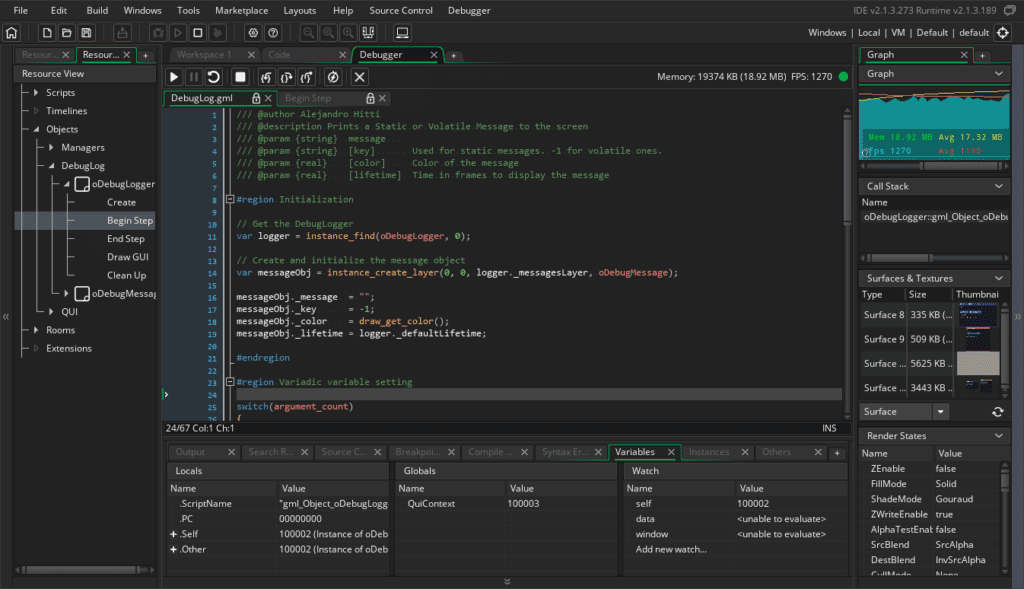Video game testing is often romanticized as a dream job – playing games all day while getting paid. But in reality, it’s a rigorous, methodical process that bridges creativity and technical precision. So how to test a video game, from a professional perspective?
Testing ensures a game isn’t just fun, but functional, polished, and ready for the spotlight. For developers, studios, or even passionate gamers curious about the craft, understanding how to test a video game is critical to delivering memorable experiences.
This article dives deep into the art and science of testing a video game, blending industry insights with actionable strategies. By the end, you will grasp the fundamentals as well as the nuances that separate a good game from a flawless one – and how professional expertise can elevate the process.
How to test a video game and why it matters more than you think
Every video game begins as an idea, evolves into code and assets, and culminates in a product meant to captivate players. But without testing, even the most innovative concepts can crumble under technical glitches, unbalanced mechanics, or immersion-breaking bugs.

Testing isn’t merely about finding flaws; it’s about refining the player’s journey. A single misplaced texture, a progression-halting bug, or a poorly optimized frame rate can shatter the illusion of a seamless world.
For indie developers and AAA studios alike, testing is iterative. It occurs in phases, each targeting specific aspects of the game. From pre-alpha stress tests to post-launch patches, every stage demands a unique approach.
Tools like automated scripts, playtest sessions, and user feedback loops become indispensable. But beyond tools, successful testing requires a mindset – an obsession with detail and a willingness to dismantle one’s own work to rebuild it stronger.
Phase 1: Pre-Alpha Testing – Laying the Groundwork
The pre-alpha phase is where testing begins in earnest. At this stage, the game is a prototype – core mechanics exist, but assets are placeholder, and entire systems might be incomplete.
The goal here isn’t to polish but to validate. Testers focus on foundational questions: Does the movement system feel responsive? Are collision detection algorithms accurate? Does the AI behave as intended?
This phase often employs white-box testing, where testers examine the game’s internal code and architecture. Developers might use tools like Unity’s Test Framework or Unreal Engine’s Automation System to run repetitive checks on physics, input responses, or save/load functions. It’s also where critical bugs – like memory leaks or crashes – are identified early.
However, pre-alpha isn’t just about code. Narrative designers might test dialogue trees for coherence, while level designers assess pacing. For example, a puzzle game’s difficulty curve could be adjusted based on how testers navigate early levels. The key is to iterate rapidly, using feedback to shape the game’s skeleton before adding flesh.
Phase 2: Alpha Testing – Balancing Art and Function
Once the game’s framework is stable, alpha testing introduces more complete assets and systems. This phase emphasizes black-box testing, where testers engage with the game as players would, without access to backend data.
The focus shifts to usability: Are menus intuitive? Do tutorials effectively teach mechanics? Is the UI readable across different screen sizes?
Alpha testers often include internal teams and trusted external partners. Their feedback helps identify “soft” issues – elements that function technically but fail emotionally. For instance, a combat system might work flawlessly in code but feel unsatisfying due to poor sound design or animation timing.
This stage also introduces regression testing, ensuring that new updates don’t reintroduce old bugs. Automated tools like Selenium or TestComplete can simulate thousands of interactions, but human intuition remains irreplaceable.
A seasoned tester might notice that a “fixed” AI now pathfinds oddly around certain terrain – which quirk algorithms could overlook.

Phase 3: Beta Testing – The Player’s Lens
Beta testing is where the game meets its audience. Public or closed beta releases invite players to explore near-final builds, exposing issues that internal teams might miss.
This phase is less about fixing crashes and more about refining the player experience. How do strangers perceive the story? Do multiplayer servers handle peak traffic? Are loot drop rates fair?
Crowdsourced platforms like Steam Playtest or Xbox Insider Hub enable developers to gather vast amounts of data. Heatmaps might reveal players getting stuck in certain areas, while forums buzz with feedback on difficulty spikes.
However, managing beta feedback requires discernment. Not all suggestions align with the game’s vision, but patterns emerge – if 70% of testers complain about a tedious crafting system, it’s time to revisit it.
Beta testing also stresses technical limits. Cross-platform compatibility, localization errors, and performance on lower-end hardware come under scrutiny. A game might run smoothly on a high-end PC but stutter on a base-model console, necessitating optimization.
Phase 4: Post-Launch Testing – The Never-Ending Cycle
Modern games aren’t finished at launch; they evolve. Live-service titles like Fortnite or Destiny 2 rely on continuous testing to balance updates, events, and DLC. Even single-player games receive patches to address edge-case bugs missed earlier.
Post-launch testing leans heavily on analytics. Tools like Google Analytics for Games or GameAnalytics track player behavior, retention rates, and in-game economies. If players abandon a questline en masse, developers can investigate and adjust. Community managers also play a role by bridging player sentiment and development teams.

Security testing becomes critical here, especially for online games. Cheat detection, server stability, and data breaches must be monitored relentlessly. A single exploit can devastate a game’s reputation overnight.
Read also: All about A/B testing in games – 5 benefits
The human element: why expertise matters
Testing a video game isn’t a solo endeavor. It requires collaboration between designers, programmers, artists, and dedicated QA specialists. Each brings a unique lens: a programmer might spot inefficient code, while a narrative designer ensures story beats land as intended.
This is where professional testing services may shine. Some game development offer end-to-end testing solutions tailored to a project’s scale. They do this by combining technical prowess and creative insight, identifying not just bugs but opportunities to enhance player engagement.
Mastering how to test a video game is a journey of persistence and passion. It’s about loving a game enough to break it, and then rebuild it stronger. Whether you’re an indie developer bootstrapping your first project or a studio aiming for the next blockbuster, testing is the linchpin between ambition and reality.
And when the challenge feels overwhelming, remember that expertise is just a partnership away. And for that, you can always count on us here at Main Leaf. We have spent over a decade honing our testing methodologies, ensuring games not only work but resonate.
Ready to see the difference professionalism makes? Get in contact to explore our game development services and transform your vision into a masterpiece players will cherish.
After all, every great game is a story – and every great story deserves to be told flawlessly.

